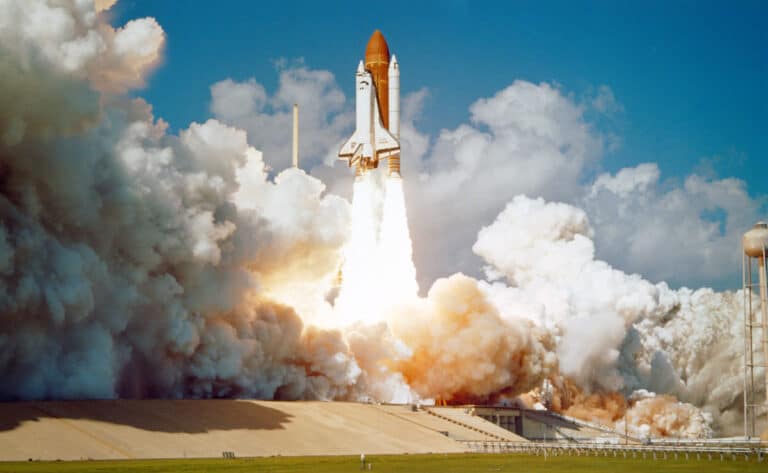Japan is working on passenger spaceships to hop between world cities in 2 hours

On Wednesday 12 May, Japan’s Ministry of Education, Culture, Sports, Science and Technology unveiled its plan to develop intercontinental passenger spaceships that could fly between the world’s major cities in two hours. The country’s government (along with the help of a few of its private companies) aims to achieve its goals by the early 2040s and predicts the market for spaceships departing from and arriving in Japan could reach roughly 5 trillion yen (about £32 billion) in 2040.
Utilising rocket technology, the ministry’s interim draft of its roadmap for future spaceship transportation has been split into two phases during an expert panel on the day of the announcement. In the first phase, the cost of the Japan Aerospace Exploration Agency (JAXA)’s next-generation H3 rocket will be halved from the 5 billion yen and spent on the H3 Launch Vehicle—JAXA’s new rocket whose first flight is set for fiscal 2021—by reusing parts of the rocket body, among other measures.
The cost of launching Japan’s current H2A rocket is around 10 billion yen (about £64 million). The first stage, or booster, of the rocket is disposed of after liftoff. That’s why making the country’s next-generation H3 rocket reusable would allow Japan to save money, which would ultimately be spent on innovation.
To put things in perspective, in April 2021, SpaceX successfully launched humans into space from US shores for the third time in less than a year atop a reused Falcon 9 rocket booster—the same booster that sent the Crew-1 mission to the International Space Station last November. They were also riding aboard a used spacecraft: the same Dragon capsule, called Endeavour, that NASA astronauts Bob Behnken and Doug Hurley flew during their Demo-2 test flight in May 2020.
In other words, it’s already been proven that both NASA and SpaceX agree that reusable spacecraft are crucial for making space travel more affordable. And the concept is not that new—for years, the space agency reused its small fleet of space shuttles, but reusable rockets weren’t a reality until Elon Musk’s SpaceX entered the scene.
But let’s get back to Japan’s ambitious plans of introducing the super-rich not to the jet-set, but to the ‘rocket-set’. “The roadmap aims to launch H3’s successor rocket around 2030, and to further reduce the cost to about 10 per cent in the early 2040s,” explains an article published in Japan’s national daily The Mainichi.
Once that’s done—and that is no small feat—by utilising different techniques such as reusing rocket parts, the private sector will lead development of transport vehicles that can go back and forth between the ground and space frequently. These will be spaceships that passengers can board.
Two forms of spaceships are envisioned: one which can take off and land on runways as aeroplanes do, and the other which can take off and land vertically like the Starship launch vehicle being developed by SpaceX in the US.
Prior to considering the roadmap, the science ministry estimated the market sizes of various space ventures. It concluded that demand for high-speed transport that connects major cities on the ground would be considerable, with services offering frequent launches forming the largest market.
Although it remains unclear exactly who will have first access to the two-hour spaceship flights just yet, how much passengers will have to pay or which cities will be picked as the lucky destinations, one thing is almost certain in my mind: expect some delay. Impatient already? Why don’t you take a flight to nowhere in the meantime?





